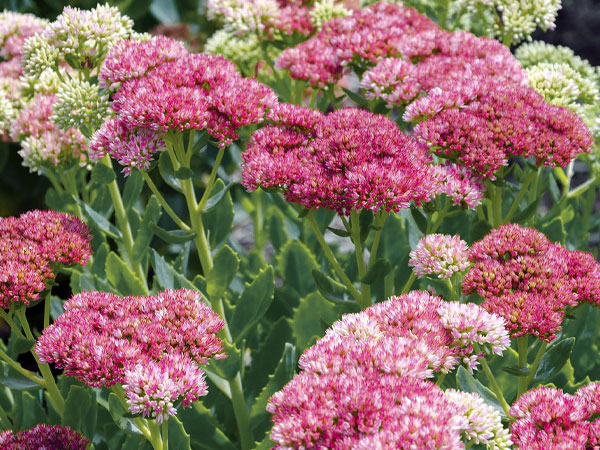Sedum / Stonecrop
Sedums, also known as stonecrops, are a diverse group of perennial plants that are native to many regions of the world, including Europe, Asia, and the Americas. They are commonly grown as ornamental plants due to their attractive foliage and showy flowers. Sedums are also highly adaptable and can thrive in a range of growing conditions, making them a popular choice for gardens, rockeries, and container plantings.
One of the most distinctive features of sedums is their succulent leaves, which are typically thick, fleshy, and often tinged with red, purple, or blue. These leaves are an adaptation to arid conditions and enable the plant to store water for extended periods, making them highly drought tolerant. In fact, sedums are often used in green roofs and other eco-friendly landscaping projects due to their ability to withstand harsh environmental conditions.



Sedums come in a wide variety of shapes, sizes, and colors, ranging from low-growing groundcovers to tall, upright species that can reach up to three feet in height. Some popular sedum species include Sedum spurium, Sedum spectabile, and Sedum telephium. Sedum spurium, also known as two-row stonecrop, is a low-growing groundcover that spreads quickly and produces small pink or red flowers in the summer. Sedum spectabile, commonly known as showy stonecrop or ice plant, is a taller species that produces large clusters of pink or white flowers in the late summer or early fall. Sedum telephium, also known as orpine or live-forever, is a taller species that produces clusters of pink or red flowers in the late summer or early fall.
Sedums are generally easy to grow and care for, as they prefer well-drained soil and full sun to partial shade. They are also relatively pest and disease resistant, making them a low-maintenance choice for gardeners. However, it is important to note that sedums can be susceptible to root rot if overwatered or planted in poorly draining soil.
In addition to their ornamental value, sedums also have a number of practical uses. Many species are edible and can be used in salads or as a garnish. Sedums are also used in traditional medicine to treat a variety of ailments, including digestive issues, skin irritations, and respiratory problems.
Overall, sedums are a versatile and attractive group of plants that are well-suited to a range of growing conditions. Whether used in rockeries, container plantings, or as groundcovers, these hardy perennials are sure to add beauty and interest to any garden.